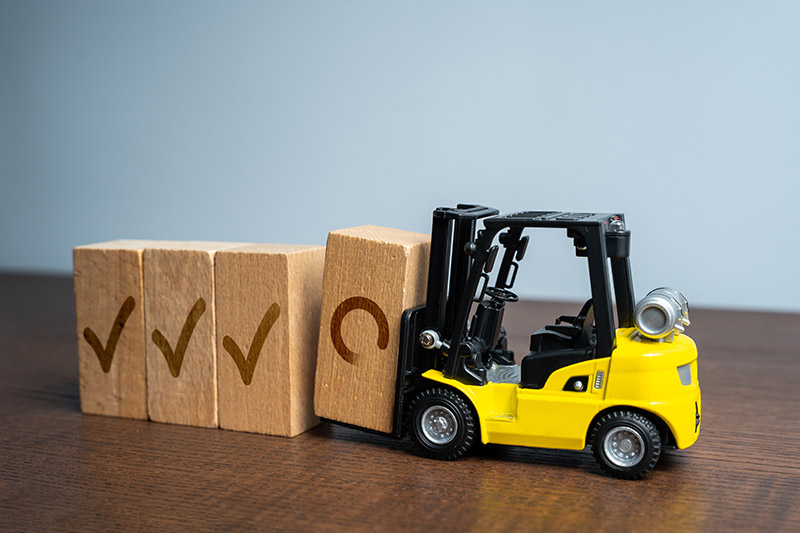What is the True Capacity of My Forklift?
What is the maximum carrying capacity of my forklift to a given lift height?
The load-carrying capacity of a forklift is indicated on the capacity data plate or nameplate, which should be prominently displayed in a location visible to the operator. This plate shows the maximum lifting capacity of the forklift at full mast height and a specific load center for the given configuration. If the forklift's configuration, load characteristics, or if the data plate is unreadable, or if there are new load handling conditions, a new or updated capacity plate must be added to reflect these changes. It's crucial, as warehouse managers and forklift operators rely on this information to determine the maximum load that can be safely handled.
Several factors affect a forklift's lifting capacity, and these are listed on the capacity data plate. These include:
- Make or Manufacturer
- Model
- Power Source
- Battery Weight (for electric models)
- Tire Type
- Tire Size
- Mast Lift Height
- Mast Carriage Type
- Attachment(s) Type
- Attachment(s) Model
- Load Center of Gravity (CG or LC)
If any of these factors change, especially the attachments or load center, the capacity plate should be checked for accuracy to ensure safe load handling.
Forklift Attachments Change the Capacity of the Lift Truck
A forklift attachment includes anything mounted to the front carriage of a forklift or attached to another attachment. For example, if longer forks are added or a fork-mounted attachment such as a drum handler or fork extensions are used, the forklift's capacity could be significantly reduced. A new capacity data plate must be added or updated to reflect the altered configuration. OSHA regulations require a legible capacity plate that reflects any attachments being used.
Capacity Decreases the Higher the Forklift Lifts
The lift height or maximum fork height (MFH) greatly impacts a forklift's load-carrying capacity. Forklifts with high masts typically have greater capacity at lower lift heights than at their maximum height. This is why some forklifts may feature dual capacity ratings on the data plate, indicating a higher capacity for lower lift heights and a lower capacity for the maximum lift height. This allows operators to handle heavier loads at lower heights (e.g., for loading and unloading trucks) while still using the same forklift to place lighter loads in high storage areas.
If the Length of the Load is Longer, Lifting Capacity is Reduced
A forklift uses leverage to lift a load, so any condition that shifts the load's center of gravity (LC or CG) further from the forklift decreases the lifting capacity. Attachments and load dimensions can affect the residual capacity. Load center generally refers to the horizontal distance to the load’s center of gravity, typically half the load length for symmetrical items. For example, a forklift rated at 5,000 lbs at a 24" load center will have its capacity reduced to 1,270 lbs if using an 8-foot fork-mounted jib boom because the boom moves the load center to 96". In this case, a dual load center rating on the capacity plate might indicate a higher capacity (2,750 lbs) at a 4-foot load center and a lower capacity (1,270 lbs) at the 8-foot load center.
Load Center also Affects Carrying Capacity
Even small changes in the load center can significantly reduce carrying capacity. For instance, the capacity of a 5,000 lb forklift with 48" forks and a 24" load center drops to 3,660 lbs when 72" fork extensions are used to lift a 6-foot-long load.
Where to Check Your Lift Capacity
The key thing to remember is that every forklift must have a legible capacity plate that accurately reflects its attachment configuration and the correct load center for the load being lifted. You can contact Professional Forklift Engineering Services at www.forkliftcapacitycalculator.com to check your lift capacity and get a professional engineering (PE) certified capacity rating plate for your forklift.
Please log in to leave a comment.




No Comments Yet